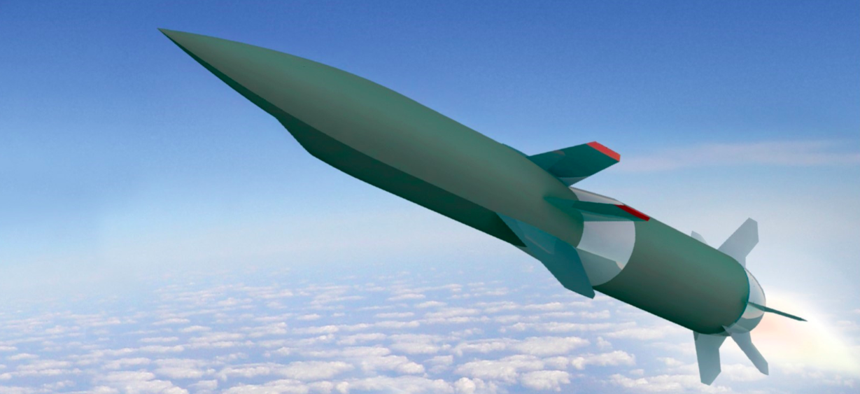
An artist's rendering of the Hypersonic Airbreathing Weapon Concept, or HAWC, missile DARPA
Test Flight Brings Hypersonic Program to Successful Close, DARPA Says
The HAWC effort has produced two “feasible hypersonic airbreathing missile designs.”
An experimental hypersonic missile demonstrated “improved capabilities and performance" in a test flight that took it above 60,000 feet, faster than Mach 5, and farther than 300 nautical miles, the Defense Advanced Research Projects Agency said Monday.
It was the final test flight for the Lockheed Martin-produced version of the Hypersonic Airbreathing Weapon Concept, or HAWC, missile, a joint project of DARPA and the U.S. Air Force. It built off the Lockheed missile’s first successful flight last March, which achieved similar speed, altitude, and range.
The HAWC program “accomplished all of its initial objectives,” a DARPA statement said. The data will help the Air Force design future highly-maneuverable hypersonic weapons.
The Lockheed missile joins a similar airbreathing prototype from Raytheon, which had a successful test flight in September 2021.
“The nation’s hypersonic portfolio now has two feasible hypersonic airbreathing missile designs (Lockheed Martin and Raytheon) to improve and mature in the future,” the statement said..
The military is also pursuing boost-glide hypersonics that fly much higher and then maneuver on their way back down to earth. But air-breathing missiles, which can be launched from a plane, are generally seen as the more useful weapon.
The breakthrough comes after years of concerted Pentagon efforts to accelerate research and development of highly maneuverable hypersonic weapons, following the deployment of a new generation of hypersonic weapons from China and Russia. The Pentagon requested $4.7 billion for hypersonics development and testing in its 2023 budget, up nearly $3.8 billion over the previous year’s request.




